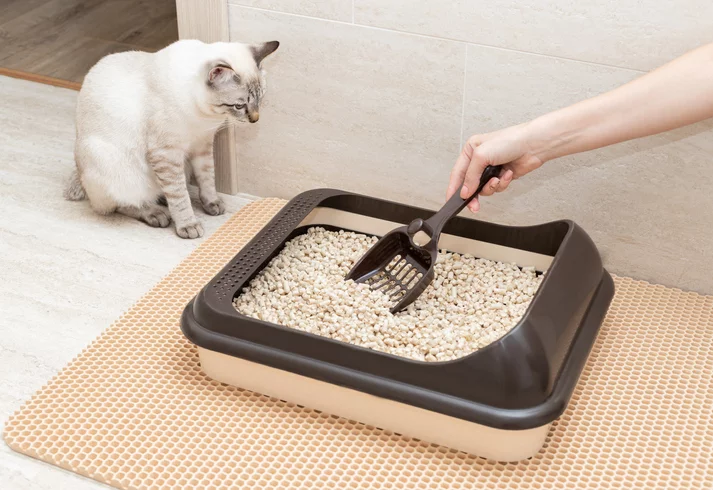Signs of a Blocked Cat
One of the most frustrating health issues your cat can go through is a urinary blockage. This is a serious health condition which has the potential to be fatal. All cat owners should be familiar with the signs and symptoms, as early detection and treatment are vital. A urinary blockage occurs when the cat’s urethra (the tube that carries the urine from the bladder to outside the body) becomes blocked. This disease affects adult male cats more often because their urethra is longer and narrower. However, cats of all ages and genders can experience a urinary blockage.
There are a few causes of urethral blockage. Most often the blockage is causes by a build up of protein, small stones or crystals that have formed in the urinary tract system and create a blockage. Another is that the blockage could be caused by white blood cells, clumps of mucus or other matter that can form a plug in the narrow urethral tube. The blockage could also be due to swelling or spasms from irritation to the urethra. Additionally, a tumor could be the reason for the blockage.
The scary thing about a urinary blockage is that once the urethra is obstructed, urine will begin to back up into the bladder and toxins will compound into the blood stream. If a blockage persists for 3 to 6 days, the toxin build up will result in death. If you suspect a blockage, DO NOT put off having the cat examined by a veterinarian. Urinary blockages are an extremely dangerous health condition.

When you get to the vet, the doctor will perform a basic exam on your cat. Along with the general exam, we may take x-rays, draw blood for testing, and get a urine sample. All this is done with the goal of diagnosing your cat and making sure the right treatment path is taken. Once the veterinarian has diagnosed a urinary blockage, treatment will begin. If the issue is that there is an obstruction in the urinary tract, the veterinarian will sedate the cat and insert a catheter into the urethra in order to expel out the blockage and drain and flush the bladder. If there are stones that cannot be flushed out of the bladder, the veterinarian may need to push them back into the bladder and remove them surgically.
The doctor will then determine the best course of action to manage the toxins that may have created other issues throughout the body. Upon release the veterinarian will discuss lifestyle changes, medications, and dietary changes to help prevent additional blockages in the future. After being discharged, it is crucial for owners to realize that their cat is at higher risk for re-blocking for about a week or two. Additionally, after recovery owners should be aware that while some cats will never have another obstruction, others may suffer repeated occurrences throughout their lifetime.
Preventing a Urinary Blockage
Luckily, there are some ways of helping to prevent a urinary blockage from happening. Some things that can be explored are water intake, nutrition, and the cat’s stress level. Water intake can be a contributing factor to urinary issues. Cats can be crazy picky about their water source. A water fountain can be a great option. Some people put out both a fountain and a bowl because if the fountain stops working for some reason, the cat would still have access to water. Some cats also prefer a wider bowl so that their whiskers aren’t touching the sides. To encourage water intake, ice can also be added to the water for them to play with and possibly changing the location of the water.
If you have a cat that is prone to urinary tract issues, you may need to look at changing the nutrition your cat is receiving. While this could be as simple as adding wet food to their meals to provide extra hydration, many cats will need to go on a prescription diet. This is something to be discussed with the veterinarian, as a diet should be prescribed based on your specific cat’s dietary needs. Another way to to try to avoid a blockage is to reduce stress. It is one of the main factors of bladder inflammation. Maintaining routines is important because changes can be upsetting. Additionally, stress can occur in cats due to boredom. If you have a cat that likes to spend a lot of time outdoors, they may struggle with stress in the winter. Make sure they have a perch to look outside and lots of interesting toys that you rotate to keep things interesting.
Conclusion
While a urinary blockage can be extremely scary, if it is diagnosed early, it can usually be treated successfully. Making sure your feline friend is hydrated and paying attention to the litter box and daily habits goes a long way in preventing blockage and recognizing early warning signs. When in doubt, always call your veterinarian. They are truly the best resource for any questions or concerns owners may have.
If you feel that your cat may be blocked, don’t hesitate to contact Chicago Drive Veterinary Clinic for help. Our team is here to help make sure your cat is healthy and well!

